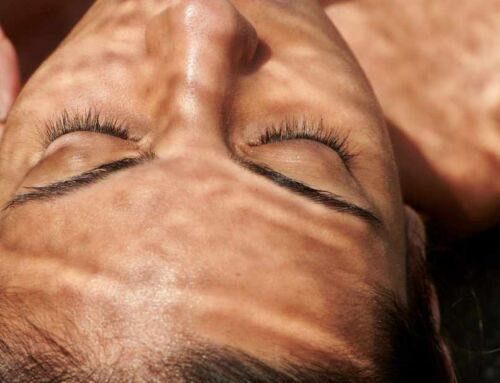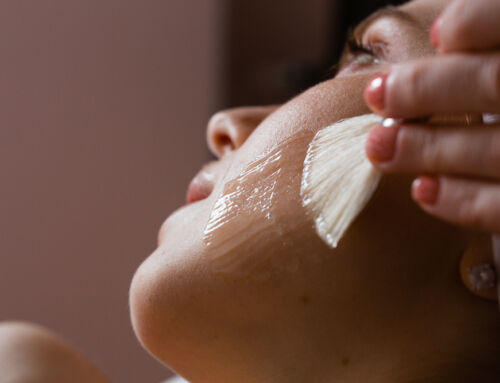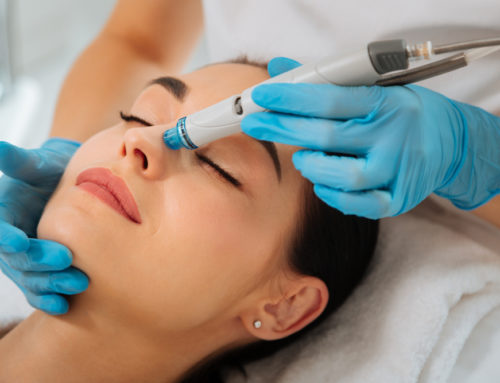Noses come in all shapes and sizes and play a vital role in the symmetry of your face. The nose also facilitates the sense of smell, aids breathing, and is crucial in filtering and humidifying the air we breathe.
Many people are dissatisfied with the appearance of their nose, while others suffer from medical conditions or trauma that can affect its functionality, so it’s no surprise that rhinoplasty (a nose job) is a widespread surgical procedure.
What you might not know is that nose jobs have a rich history and cultural significance. While the popularity of nose jobs might have surged in the 20th century, the surgery has actually been performed since the Middle Ages. Only now, patients have more options for surgical techniques and nose shapes and sizes.
Whether you are looking to correct a congenital defect, address a medical issue, or are seeking to boost self-confidence, this blog will tell you everything you need to know (as well as a few fun facts) about rhinoplasty.
What is a Rhinoplasty (Nose Job)
Rhinoplasty, also known as a nose job, is surgery to change how your nose looks or functions. Some people desire nose reshaping for cosmetic reasons only. In contrast, others need the procedure for medical or functional reasons, such as a broken nose, or to improve breathing. Others get a nose job for both reasons.
The nose is made up of bone, cartilage, and skin. A rhinoplasty can change any or all of these structures, depending on the desired change and reason for surgery. Thanks to advanced surgical techniques, results from a nose job can be very natural. Some of these more modern techniques can also reduce scarring and downtime.
According to the most recent data available, in 2020, roughly 352,555 people received a rhinoplasty procedure. This number is down from the previous year. However, rhinoplasty consistently ranks as one of the most popular cosmetic procedures performed yearly and is the most popular cosmetic procedure among men.
When it comes to age, it’s essential to consider growth factors. Unless there is a medical reason, it is not suggested that someone gets a nose job until they have finished growing. Often, people “grow into” their noses, and waiting until facial development is complete ensures a more stable and suitable outcome.
There are several different types of rhinoplasty, which we will discuss next. But no matter the method used, rhinoplasty should only be performed by a surgeon board-certified in plastic surgery by the American Board of Plastic Surgery.
Additionally, you should look for a plastic surgeon who specializes in rhinoplasty and has performed the procedure many times, with stellar before-and-after results to prove their work.
Then vs. Now: The History of Rhinoplasty
Rhinoplasty has a rich history, reaching back to ancient Indian and Egyptian cultures around 1500 BCE. However, it was the Renaissance, notably in Italy, that witnessed a revival of the procedure. Renowned Italian surgeon Gaspare Tagliacozzi documented rhinoplasty techniques in 1597, marking a pivotal moment in its historical trajectory.
As the 18th and 19th centuries unfolded, rhinoplasty techniques continued to evolve. During this era, the artistry of surgeons began to emerge, demonstrating a shift toward refined procedures. Surgeons explored innovative methods, seeking to enhance both form and function, laying the groundwork for the aesthetic transformations seen in the years to come.
The 20th century marked a significant boom in the popularity of rhinoplasty. Advancements in anesthesia and surgical techniques made rhinoplasty more accessible, contributing to its widespread appeal. With societal emphasis on aesthetics playing a significant role, individuals increasingly sought rhinoplasty not only for reconstructive purposes but also as a means of cosmetic enhancement. This shift marked a departure from the perception of rhinoplasty solely as a reconstructive necessity, now encompassing a broader scope of cosmetic goals.
Surgical techniques and styles evolved throughout these eras, reflecting the changing ideals of beauty and aesthetic preferences. The mid-20th century witnessed Hollywood’s influence, with icons like Marilyn Monroe rumored to have undergone rhinoplasty, contributing to the procedure’s ascent in popular culture. As celebrities became trendsetters, rhinoplasty transitioned from a personal enhancement to a symbol of glamor and sophistication.
Today, rhinoplasty stands at the forefront of cosmetic surgeries, consistently ranking among the top procedures performed annually. Social media platforms and celebrities wield significant influence, shaping perceptions of beauty and driving the surge in the popularity of rhinoplasty. The allure of achieving the perfect selfie or emulating the refined noses of admired public figures has fueled a cultural shift, making rhinoplasty more mainstream than ever.
Technological advancements, refined surgical techniques, and a better understanding of facial aesthetics have elevated rhinoplasty to new heights. Surgeons now employ cutting-edge methods, emphasizing a natural look and personalized enhancements. The contemporary approach focuses on preserving individuality while achieving balanced facial features.
From its ancient origins to modern applications, rhinoplasty’s rich history is a testament to the ever-evolving nature of aesthetic refinement and surgical progress. It will be exciting to see how this division of plastic surgery changes as societal attitudes and technological capabilities continue to evolve.
Nose Job Trends
Plastic surgery trends are a lot like hairstyles and clothing; they change quickly. Today, celebrities and social media heavily influence the size and shape most people request.
Studies show that social media platforms were utilized extensively, significantly impacting individuals’ choices to pursue rhinoplasty, primarily by disseminating information about celebrities. This is not something we suggest that you use as a blueprint.
The small nose that Khloé Kardashian opted to have molded, or the popular “ski slope nose” that has flooded TikTok might not look best on your face. If you don’t like the appearance of your nose, you should consult a qualified plastic surgeon to determine the most suitable aesthetic for your individual features.
Plastic surgery is permanent for the most part. You don’t want to pick a shape and style just because it’s what’s popular today or looks good on someone else. Engaging in a discussion with a medical professional is crucial, as individual facial structures may vary, making it impossible to replicate the desired nose.
Contemporary rhinoplasty prioritizes achieving a natural look by collaborating with the patient’s existing nose and cartilage, introducing subtle changes for enhanced facial harmony. This approach prevents creating a new nose, emphasizing a more nuanced and personalized outcome. Surgeons strive for results that complement the patient’s natural features, reflecting a shift towards a more authentic and balanced aesthetic.
Reasons for Getting a Nose Job
There are various motivations for considering a nose job, ranging from enhancing appearance to addressing medical concerns. Rhinoplasty can offer transformative results for both aesthetic and functional reasons.
Aesthetic Concerns
- Refine Nose Shape: Correct a nose that appears bulbous, upturned, hooked, or droopy.
- Septum Alignment: Correct a deviated septum for improved breathing and overall appearance.
- Nostril Adjustment: Fix nostrils that are too wide, too small, too large, or turn upward.
- Bridge Irregularities: Smooth out noticeable dips or bumps on the bridge of your nose.
- Facial Balance: Adjust the size of the nose to make it smaller or bigger for enhanced facial harmony.
Medical Concerns
- Deviation Correction: Correct a deviated septum for improved breathing function.
- Birth Defects: Address and rectify any congenital nasal irregularities present from birth.
- Trauma Repair: Fix and reconstruct the nose after injuries or accidents.
- Cancer Treatment Aftermath: Restore breathing function post-cancer treatment effects on the nose.
- Cleft Lip and Palate Repair: Surgical intervention to address congenital issues affecting the nose and surrounding structures.
- Sinus Conditions: Address chronic sinus issues that may impact nasal function.
- Craniofacial Anomalies: Correct abnormalities in the skull and facial bones, often affecting the nose.
- Hemangiomas or Vascular Malformations: Surgical solutions for vascular issues affecting the nose.
Whether driven by aesthetic desires or medical necessities, it’s crucial to consult with a qualified plastic surgeon to discuss your specific concerns and determine the most suitable approach for achieving your desired results.
Types of Rhinoplasty
There are two main types of rhinoplasty: cosmetic and functional. Cosmetic rhinoplasty is done purely for aesthetic reasons to improve the appearance of the nose and overall facial balance.
Functional rhinoplasty helps to restore nasal form and function due to a medical reason, such as congenital defects, a deviated septum, or traumatic injuries. Often, people who seek functional rhinoplasty also combine cosmetic rhinoplasty.
Lesser talked about is secondary rhinoplasty. This is a surgery to correct any problems that might have occurred after a first rhinoplasty surgery. While these issues are typically minor, they are very complex and require a very advanced skillset.
Within these categories, two surgical methods are used – open and closed.
Open Rhinoplasty
Open rhinoplasty is a comprehensive surgical approach used for significant nose reshaping. During this procedure, the surgeon creates incisions, typically across the columella (the strip of skin between the nostrils), to fully detach the skin of the nose from the underlying bone and cartilage. This technique allows for a complete and unobstructed view of the nasal anatomy, facilitating more complex reshaping.
Closed Rhinoplasty
Closed rhinoplasty is a less invasive technique suitable for minor nose reshaping. In this procedure, the surgeon makes incisions within the nasal cavity, avoiding any external cuts. These incisions are strategically placed to separate the skin from the bone and cartilage, enabling the surgeon to perform necessary reshaping with reduced visibility compared to open rhinoplasty. This approach is often preferred for cases where less extensive modification is required.
Historically, closed rhinoplasty was the more prevalent method used. However, over recent years, open rhinoplasty has become more popular. While closed rhinoplasty remains widely used, an increasing number of surgeons lean towards the open technique as it grants them greater flexibility in sculpting the cartilage to meet the patient’s expectations. The open technique also provides surgeons with a clearer view of the nasal anatomy, making it advantageous for complex procedures.
Nose Shapes and Styles
There are numerous nose types. When considering rhinoplasty, understanding your natural nose shape is essential, as it will influence the type of enhancements you may wish to explore during the procedure.
The following outlines different nose shapes and styles. Many individuals may have a combination of features or a unique nose shape.
Straight Nose
Characterized by a straight bridge and an even slope, this nose shape is well-balanced and often sought after.
Button Nose
Small and cute, the button nose features a slightly rounded tip that creates an adorable and youthful appearance. This nose shape is common among individuals of East Asian descent.
Roman Nose
With a prominent bridge and a downward curve at the tip, the Roman nose exudes strength and character.
Aquiline Nose
Similar to the Roman nose but with a more prominent hook at the tip, the aquiline nose has an elegant and distinctive profile.
Upturned Nose
The upturned nose has a slightly elevated tip, creating a perky and cheerful appearance.
Droopy Nose
Opposite of the upturned nose, the droopy nose features a downward-facing tip, giving a more subdued and serious look.
Snub Nose
Short and turned upward at the tip, the snub nose has a cute and charming quality.
Hawk Nose
A nose with a prominent bridge and a distinct downward curve at the tip, resembling the beak of a hawk.
Greek Nose
Straight and prominent, the Greek nose is characterized by a well-defined bridge.
Nubian Nose
Wider nostrils and a broad base define the Nubian nose, often associated with African ethnicities.
Jewish Nose
Often characterized by a larger size and a prominent bridge, the Jewish nose has unique features.
Nose Refinements to Explore
Now that you’ve got a better understanding of your nose shape and style– let’s talk technique.
Here are a few basic descriptions of the refined enhancements that can be achieved through rhinoplasty:
Natural Refinement
Enhances your natural features with subtle adjustments, achieving a refined yet authentic appearance. Ideal for those seeking a modest enhancement while preserving the natural contours of their nose.
Celebrity-Inspired Refinement
The key word here is inspired. It is perfectly fine to draw inspiration from admired celebrities to achieve your desired aesthetic. Just remember to be realistic and discuss with your plastic surgeon whether the nose type you like is best for your unique facial structure.
Cultural Refinement
This nose job type suits those who wish to enhance their features while honoring their unique cultural characteristics.
Subtle Balance
Make minor adjustments for a balanced and polished appearance without dramatically altering your overall facial structure.
Dramatic Transformation
If you want a pronounced change in the size, shape, and structure of their nose to achieve a bold and distinctive aesthetic.
What to Consider Before Getting a Nose Job
If you are a candidate for rhinoplasty, it is crucial to approach the decision with careful thought and realistic expectations. You should understand that rhinoplasty has its limitations and set realistic goals for the surgery, focusing on improvements that align with your natural features and facial harmony.
It is also important that you are in a mentally sound place before opting for rhinoplasty. Ensure you want the procedure for yourself and not to meet someone else’s expectations or societal standards.
Your current health status should also be considered. A thorough health evaluation is essential. Discuss your medical history, current health status, and any pre-existing conditions with your surgeon.
You should also fully understand the financial aspects of the surgery, including the cost, potential additional expenses, and available financing options. In some instances, such as functional rhinoplasty, some or all of the procedure might be covered by insurance.
Last but certainly not least, you should choose a qualified and experienced plastic surgeon. Research their credentials, view before-and-after photos, and engage in thorough consultations to ensure confidence in their skills.
Risks, Recovery, and Results from Rhinoplasty
Like any surgery, rhinoplasty carries risks. Discuss potential complications with your surgeon and understand the steps taken to minimize these risks. That said, rhinoplasty is a very safe surgery, and advancements in medical technology and surgical techniques have significantly reduced the occurrence of complications.
Rhinoplasty does require downtime. You can expect initial swelling and bruising, and you’ll need to follow post-operative care instructions diligently. This may include wearing protective bandages, a period of rest, avoiding certain activities, taking prescribed medications, and attending follow-up appointments to monitor your progress.
You will also need patience. Swelling and bruising are normal during the initial recovery, and final results take time to fully manifest. It’s essential to understand that the healing process varies for each individual.
While some visible improvements will be noticeable in the early stages, the complete refinement of the nose’s appearance may take several months. Your surgeon will provide guidance on managing expectations and ensuring a smooth recovery journey.
Rhinoplasty Alternatives
Before deciding on any rhinoplasty alternative, it’s crucial to consult with a skilled professional who can assess your specific needs, provide personalized recommendations, and guide you toward the most suitable option for achieving your aesthetic goals.
Depending on your goals and reasons for considering rhinoplasty, you might be a candidate for non-surgical rhinoplasty. This technique utilizes fillers to mold the nose into a desired shape.
Using fillers to alter the shape of your nose is an excellent choice for people who do not want to undergo surgery or experience significant downtime.
However, it’s not suitable for everyone. Here are some considerations for Non-Surgical Rhinoplasty:
Temporary Results
Nonsurgical rhinoplasty provides temporary results compared to the long-lasting effects of traditional rhinoplasty. The filler material is eventually absorbed by the body, requiring periodic touch-ups to maintain the desired appearance.
Limited Corrections
While nonsurgical rhinoplasty is effective for certain corrections, it may not address extensive structural changes or functional issues that surgical rhinoplasty can tackle.
Suitability
Not everyone is a suitable candidate for nonsurgical rhinoplasty. Factors such as the extent of corrections needed, individual anatomy, and medical history play a role in determining candidacy.
Procedure Duration
The non-surgical procedure is relatively quick but may require more frequent sessions to maintain the desired results compared to surgical rhinoplasty.
Where to Get a Nose Job in Nashville, Tennessee
Choosing the right place for your rhinoplasty is a significant decision, and Garza Plastic Surgery stands as a trusted choice in Nashville, Tennessee. Our comprehensive approach covers a range of surgical and non-surgical procedures, with a focus on enhancing natural beauty and boosting self-confidence.
Whether you are considering rhinoplasty or other cosmetic procedures, our experienced plastic surgeons, Dr. Garza or Dr. Yang, collaborate closely with each patient, creating personalized treatment plans to achieve desired results.
Complementing our surgical offerings, Advanced Nurse Practitioner Tracey Robinson, APN, brings expertise in non-surgical aesthetic treatments, including non-surgical rhinoplasty.
Our clinic understands the transformative impact of aesthetic and reconstructive surgery, recognizing the profound influence it can have on both physical appearance and self-esteem. As an all-inclusive clinic, Garza Plastic Surgery caters to your unique needs, customizing every aspect of your experience, from the initial consultation to post-operative care.
Whether you are contemplating a surgical procedure or non-surgical treatment, our dedicated team is here to help you achieve your aesthetic goals while prioritizing your safety and well-being. Contact us today to schedule a consultation and take the first step toward a more confident and beautiful you.





